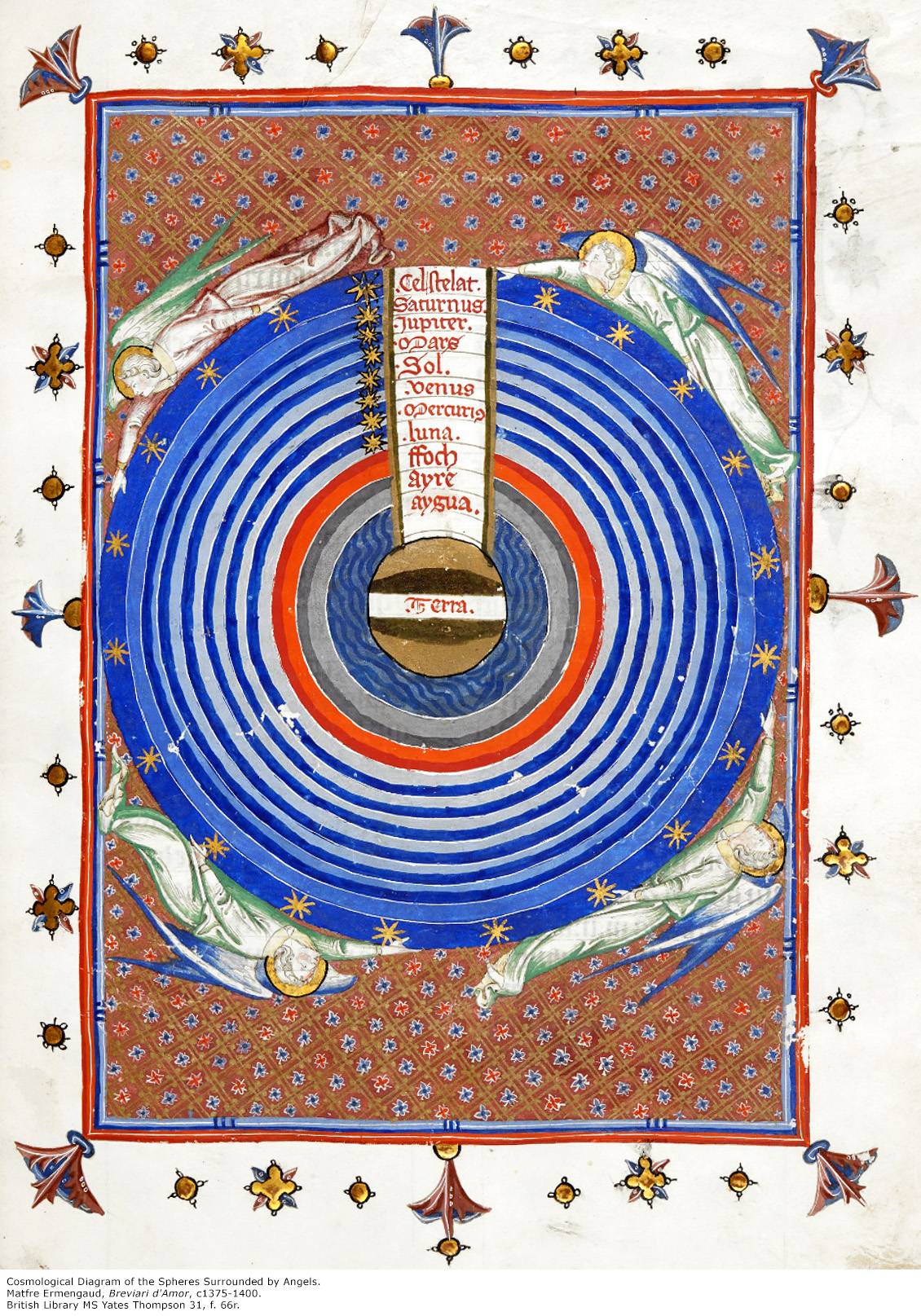 |
| When you imagine an atom to resemble a 2-D planetary model, you have all sort of problems. When you imagine a planetary model like this one from the late 14th Century, you are really in trouble. |
Readers: It's been a doozy of a week trying to figure out exactly why clouds are white. After I posted Part One, I was convinced that I would find the answer to my question deep within the clouds. So I started traveling. I entered the cloud, then the cloud droplets, then the molecules of liquid water, the atoms of hydrogen and oxygen, and landed in the electrons.
I had remembered the planetary model of the atom from high-school Chemistry and was having a really good time imagining myself an electron spinning around a nucleii of oxygen and hydrogen atoms. Wheee! It was like being on those swings at the county fair. But my fun ride ended when I imagined getting bombarded by a powerful beam of pure white sunlight.
In no time, I was knee-deep in quantum mechanics trying to calculate how each electron would react to each of the different wavelengths (red, orange, yellow, green, blue, indigo, violet). I was staring at diagrams of electrons (small dots) being so excited by a certain wavelength (a squiggly lines) that the electron jumped from its "home" orbit into the next higher orbit. I mean, I was really down there in the cloud with Neils Bohr and Max Plank. But that's not where I needed to go. I needed to play pool with my friend, Kevin.
Kevin is a faithful and critical reader of "The Accidental Naturalist" and has been supplying me with a steady stream of solid science and valuable metaphors...especially when it seems I have lost my way in the atmosphere.
After seeing my model of the atom (above) from my previous blog, Kevin wrote, "Electron shells are dead, Maria. Long live hybrid orbitals!!!" It took me three days and many e-mails to figure out what he meant.
And though I have been reading a few textbooks on the topic of scattering, my meteorology book does not really explain the chemistry of scattering and my chemistry book does not explain. So Kevin came to the rescue in his latest e-mail, the gist of which was, "Get thee to a pool hall!"
Using racked pool balls to represent a cloud droplet and the white cue ball to represent a blast of solar radiation, Kevin describes the interaction of the water and the light this way:
Using racked pool balls to represent a cloud droplet and the white cue ball to represent a blast of solar radiation, Kevin describes the interaction of the water and the light this way:
There is no formula to describe what happens when you break, when the cue ball hits sixteen densely-packed billiard balls. I think there are innumerable interactions that occur when a light beam strikes a cloud droplet, just like when the cue ball hits the racked balls on the break shot. On the break shot, the cue ball strikes the lead ball, which absorbs the cue ball’s energy. The lead ball then passes some of that energy to the two balls behind it. There are probably hundreds of energy absorption/emittance reactions in the break shot. A light beam hitting a cloud droplet is like a billiard break shot with billions of racked balls. At the atom or molecule level, all the fundamental wavelength-dependent interactions occur. But the droplet is so dense, and there are so many simple interactions between photons and individual atoms/molecules, that collectively it all gets scattered.I think Kevin is right and this is great metaphor (even though I pocket the cue ball on the break shot.) I still cannot understand how different that scattered light appears to us with what seem to be infinitesimally small variations in the size of the water droplet. How can a raindrop cast a rainbow when a smaller cloud droplet casts white light? There is something about the mechanism of interaction I do not understand.
So, stay tuned for the dance of the photons and electrons!

